Header: LifeStraw
We often celebrate complexity in design, looking for the “smart” object, the app-connected device, the algorithm-driven solution. But what happens when the power grid fails, when the infrastructure collapses, when there is no app, no Wi-Fi, and no clean water?
This is the scenario where 99% of digital design becomes irrelevant. And it’s the exact scenario in which industrial design as a tool for human survival becomes the most important discipline in the world.
We are talking about resilient design: design for crisis, for failure, for the “other 90%” of the world’s population that exists outside the bubble of stable infrastructure. And for over two decades, the most powerful example of this philosophy isn’t a complex machine. It’s a simple plastic tube: the LifeStraw.
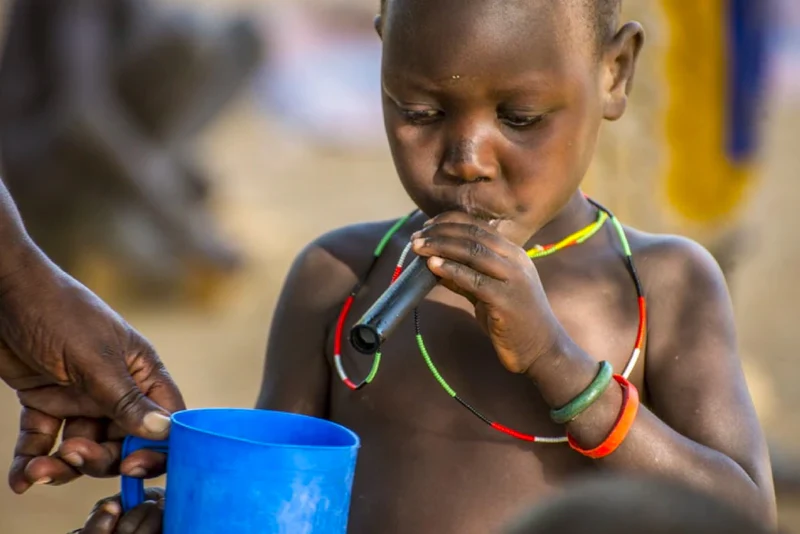
A design challenge with no room for error
Before we analyse the plastic and the filter, we have to understand the “why.” To truly grasp the brilliance of the LifeStraw as a design object, we must first confront the terrifying scale of the problem. The LifeStraw design brief wasn’t about market share or user preferences; it was a direct response to one of the most brutal, fundamental challenges humanity faces: providing safe water to people who have absolutely nothing, in places where nothing works.
Around 2 billion people, roughly one in four people, do not have access to safe drinking water. The result is staggering. At any given moment, half of the world’s poor are sick from waterborne diseases. Diarrheal disease is the world’s most prolific killer, claiming over 6,000 lives every single day, most of them children.
This is not a problem you can solve with a software update. The brief is to create a water filter for people who have: no electricity, no access to spare parts, no mechanical or technical training, no money for expensive equipment, an urgent, daily, life-or-death need.
How do you design for these constraints? You design for resilience.

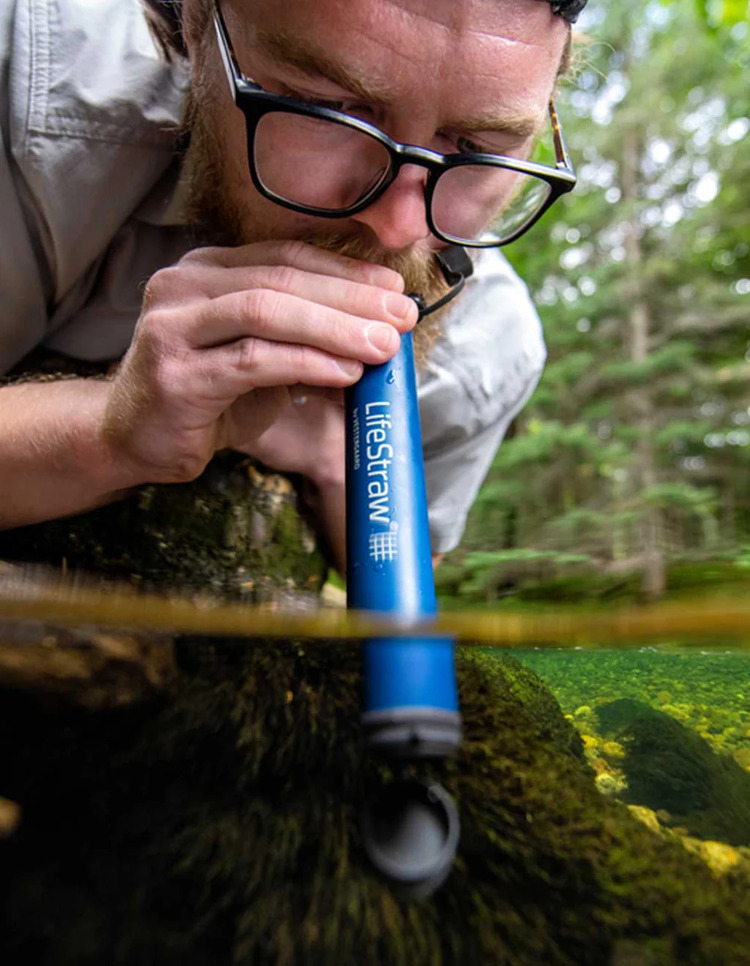
A radical solution: The absence of features
The LifeStraw, developed by the Swiss-based public health company Vestergaard, is a masterclass in designing for failure. It’s a 25 cm-long, 29 mm-diameter plastic pipe that costs just a few dollars. It has no moving parts to break. It requires no batteries. It’s a sealed unit with no replaceable filters to stock or lose. Its power source? Human suction. A force so basic, as the designers point out, that even a baby can perform it.
The original idea began in the 1990s. The Carter Center, working to eradicate the horrific Guinea worm disease, approached Vestergaard for help. Guinea worm is contracted by drinking water contaminated with water fleas carrying the parasite’s larvae. The challenge was to create a filter fine enough to stop the larvae, but simple enough to be used by anyone, anywhere.
The initial work, led by Torben Vestergaard Frandsen, eventually grew beyond that original concept. The final LifeStraw can do much more than filter Guinea worm.
Inside the simple plastic casing is a feat of material science: an advanced hollow fiber membrane. Picture a dense bundle of tiny straws with microscopic holes, smaller than 0.2 microns. These holes are so small that they physically block bacteria, parasites, and microplastics from passing through. When a person sucks on the straw, the water is pulled through this advanced strainer. By the time the water hits their lips, it’s clean.
The device removes at least 99.9999% of waterborne bacteria (such as E. coli and Salmonella) and 99.999% of waterborne parasites. The personal straw can clean up to 1,000 liters of water, enough to last one person for an entire year.
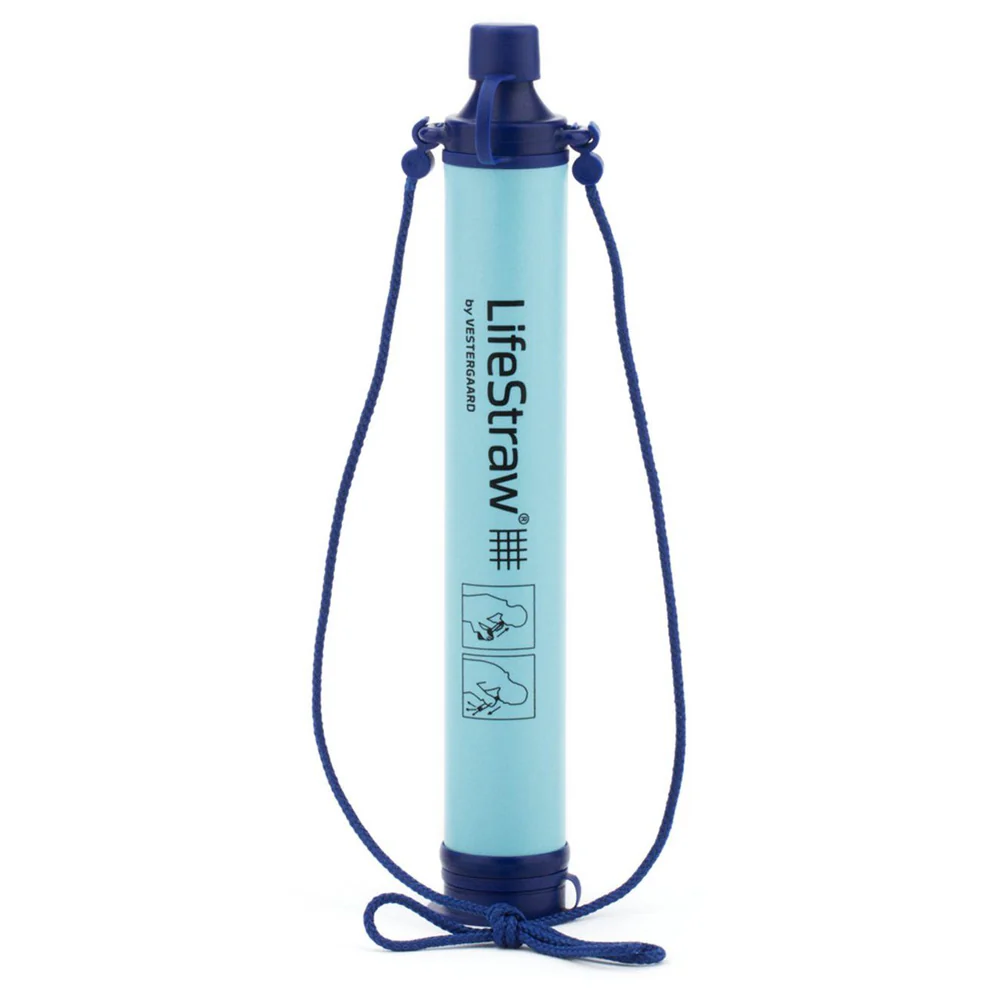
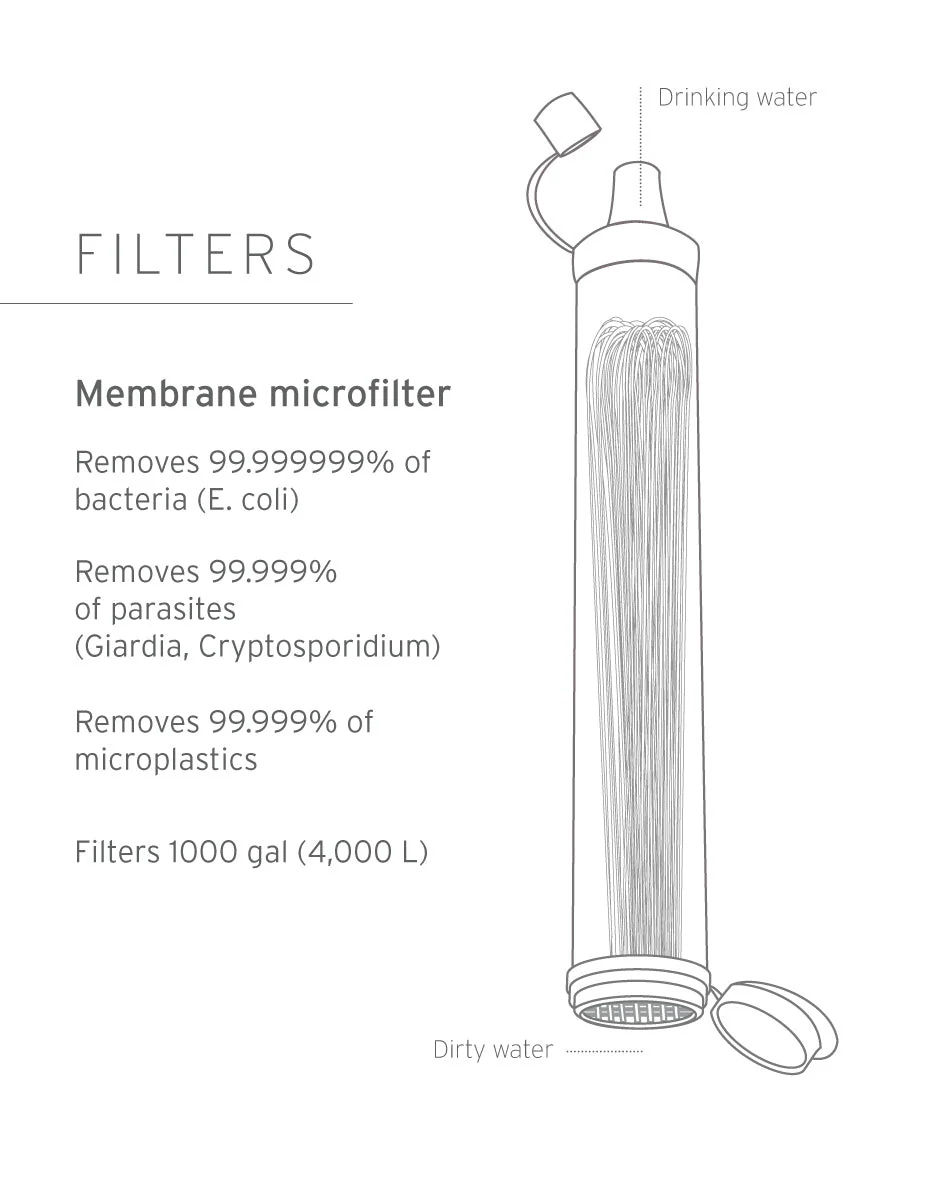
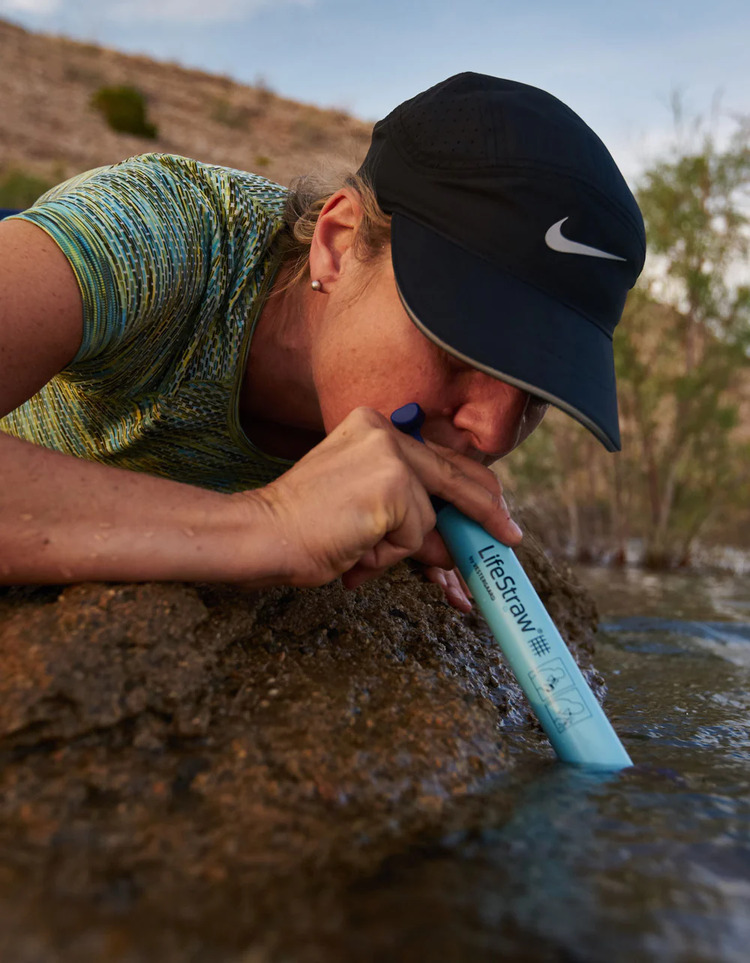
An icon of humanitarian design
This direct, robust solution quickly became a symbol of “design for the other 90%,”. This is a design that doesn’t chase luxury markets but instead focuses on providing basic, life-altering solutions for the majority of the world’s population. The LifeStraw is not about aesthetics; it is about function at its most vital.
When disaster strikes, LifeStraws are often part of the first wave of emergency response. After earthquakes in Puerto Rico, floods in Kenya, or cyclones in Bangladesh, the company has been on the ground, providing its products. In a crisis, restoring access to clean water is the first and most critical step in preventing a secondary disaster of disease outbreaks, like cholera or typhoid. The LifeStraw is a tool that allows people to take their survival into their own hands, drinking directly from a contaminated river or puddle if necessary.
The success of the original design led to an entire family of products built on the same core principle. The LifeStraw Family is a larger, gravity-fed unit that can filter up to 18,000 litres of water, enough to provide for a whole family for three years. This adaptation shows a shift in design thinking from immediate personal survival (the straw) to household stability (the family filter).
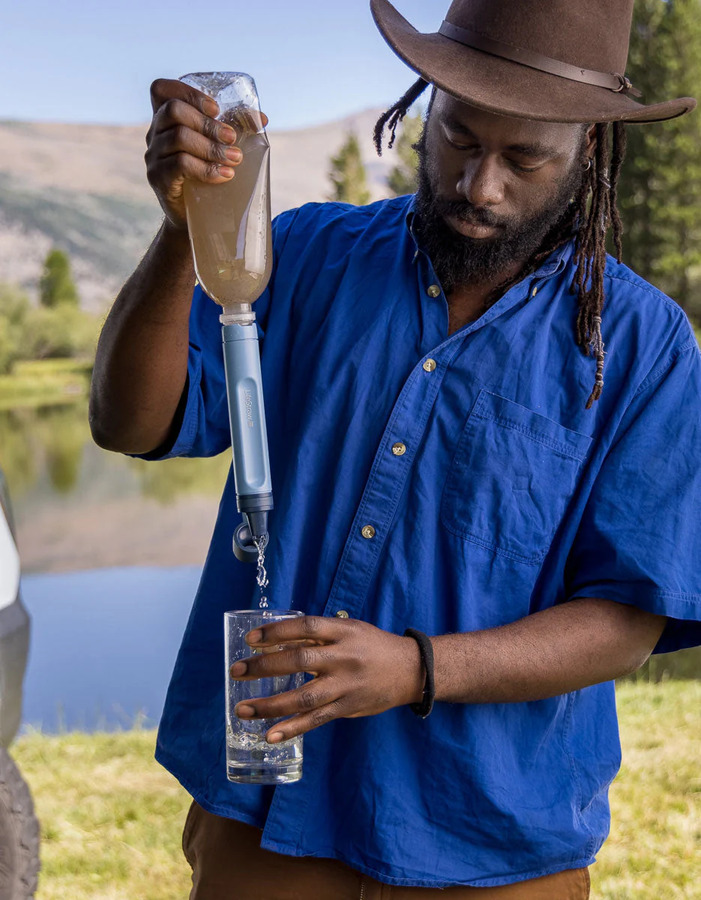

From crisis to campsite: The business of resilience
A design this effective couldn’t be contained to crisis zones. In the United States and Europe, the LifeStraw became a best-selling item for an entirely different audience: hikers, backpackers, and emergency preppers.
This accidental market became the engine for LifeStraw’s mission. The company (which spun off from Vestergaard in 2020) operates on a “humanitarian entrepreneurship” model. The recreational sales in Western markets directly fund their public health and emergency response work. This, in itself, is a resilient business design.
It’s formalised in their “Give Back Program”: for every single LifeStraw product sold, a child in need receives access to safe water for an entire school year. The company is a certified B Corp and Climate Neutral, cementing its social and environmental mission into its legal and operational structure.

This has allowed the design to evolve again, creating a full ecosystem of products for different contexts:
- Straw Filters: The original and the new Peak Series for personal, on-the-go use.
- Bottle Filters: Integrating the filter into reusable water bottles for hikers and daily commuters.
- Pitcher Filters & Dispenser Filters: Bringing the technology into the home to remove bacteria, parasites, and contaminants like lead and chemicals from tap water.
- Gravity Filters: High-capacity bag-based systems for campsites or small groups.
- High-Volume Purifiers: Large-scale units designed for clinics, schools, and refugee camps.
Each product uses the same core technology, adapted for a new user. The latest “Peak Series” straw, for example, shows a continued iteration. It was re-engineered for a better flow rate, reduced clogging from silt, and given universal threading to attach to standard water bottles. The design is never “finished”; it is always being improved based on real-world feedback.
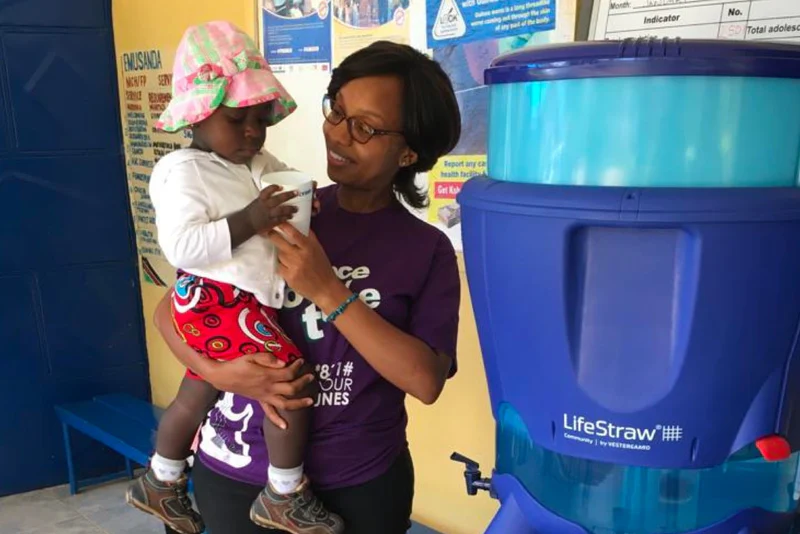
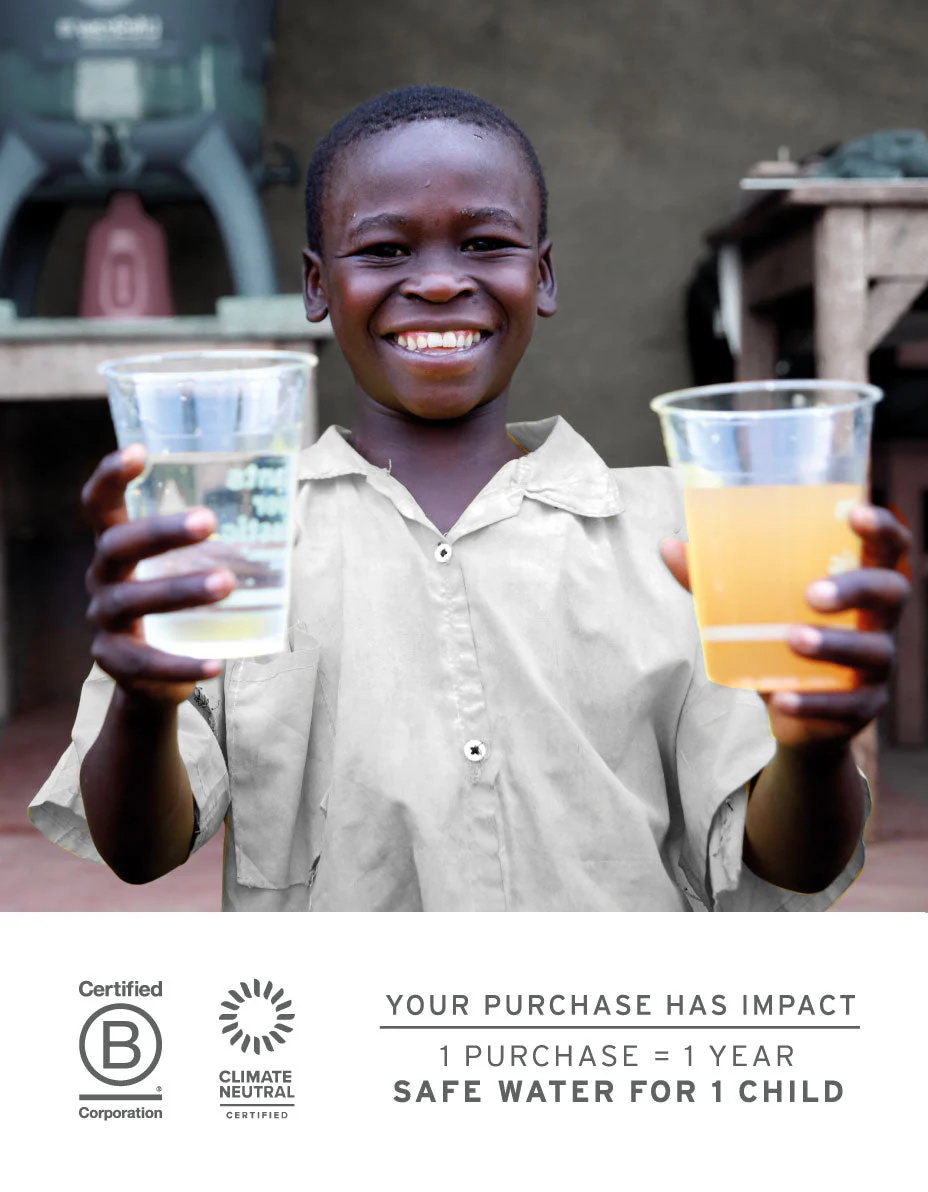
The true meaning of ‘disruption’
The LifeStraw is a profound example of resilient industrial design. It’s a product built on what it removes – not just bacteria, but also the need for electricity, moving parts, and a complex supply chain. It solves a problem by embracing simplicity.
The impact is measurable. In 1994, when Vestergaard was first approached by The Carter Center, there were over 100,000 cases of Guinea worm. In 2019, there were only 53. That is the power of a design that is built to last, built to work, and built for people.
As we look to the future of design — whether digital, physical, or architectural —LifeStraw offers a vital lesson. The most powerful designs aren’t always the most complex. They are the ones that are accessible, durable, and radically effective, especially when everything else fails.







